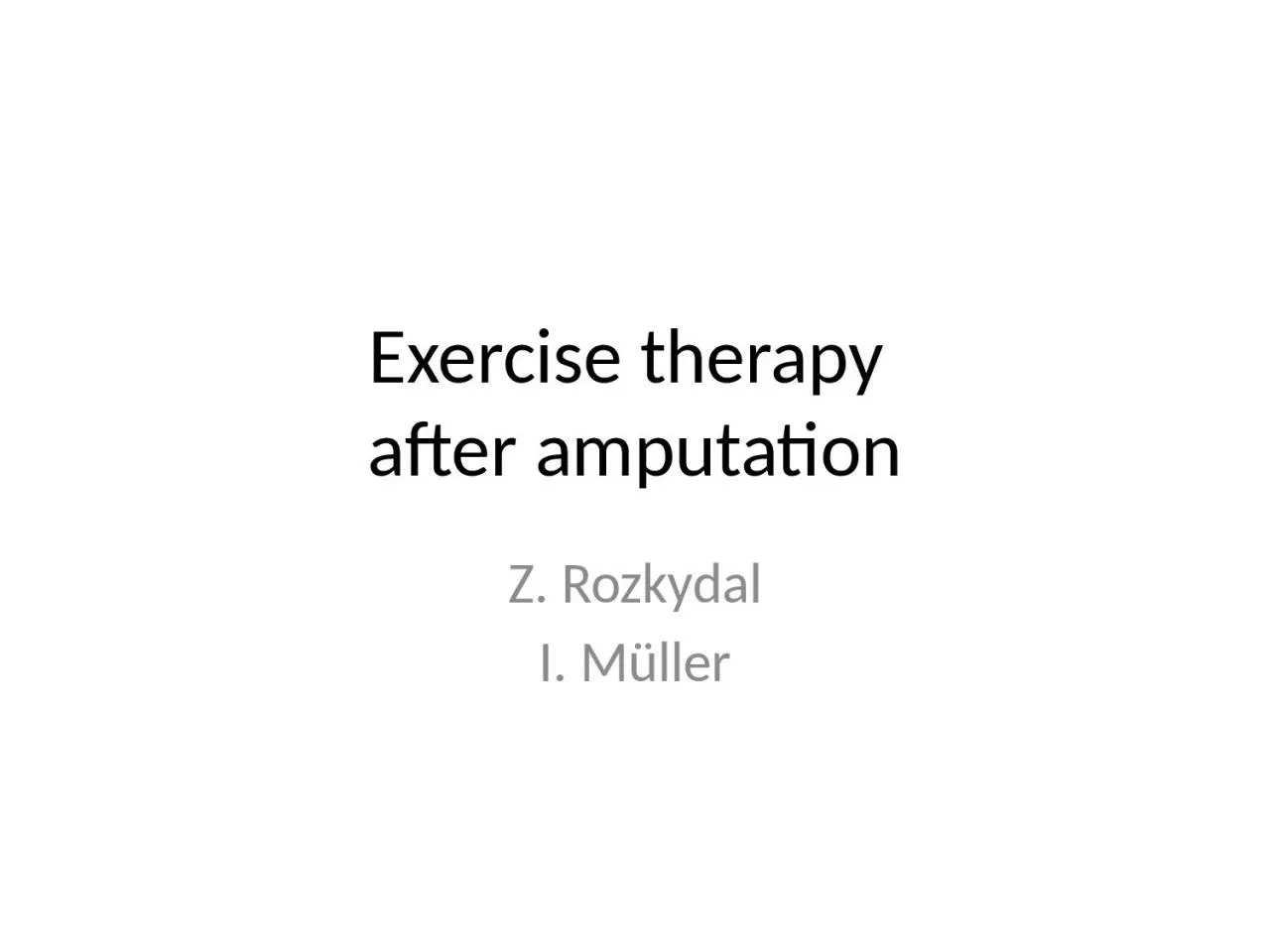

amputation Z Rozkydal I Müller Physiotherapy after amputation Management for amputees Prescription Prosthetic fabrication Rehabilitation Pain management Social ID: 1034883
Download Presentation The PPT/PDF document "Exercise therapy after" is the property of its rightful owner. Permission is granted to download and print the materials on this web site for personal, non-commercial use only, and to display it on your personal computer provided you do not modify the materials and that you retain all copyright notices contained in the materials. By downloading content from our website, you accept the terms of this agreement.
1. Exercise therapy after amputationZ. RozkydalI. Müller
2. Physiotherapy after amputationManagement for amputees: PrescriptionProsthetic fabricationRehabilitation Pain managementSocial careOccupationPsychology Only 70 % of amputees use effectively the prosthesis
3. Indication for amputationVascular problem- severe ischemiaSevere diabetic macroangiopathy Severe trauma – no chance for reconstructionSevere infection with sepsis in urgent casesMalignant tumorsNeuropathies leading to deep trophic ulcersCongenital abnormalities – useless parts of the limb
4. The amputee has to meet certain criteria:physical, psychological and socialProsthesis is controlled by the strength of muscles of the residual limbAmbulation with the prosthesis is more demanding:Oxygen expediture is 400 times greater thanin bipedal locomotionLow physical condition is contraindication for prosthesis:ischemic heart diseasesevere asthmadecompensated hypertension etc.
5. Basic requirements is the shape and the length of the residual limbCertain minimal length of the residual limb is requiredThe longer residual length the greater the strengthThe thigh: optimal length for the residual limb is approximately 1/3 of the length of the femurDistal part of the residual limb has to be conical in shapeMyoplastic amputation ensures maximum muscle coverageof the residual limbThe residual limb developes usually for one year- - atrophy of muscles Functional prosthesis
6. PhysiotherapyBandaging with elastic wraps into conical shapeManagement of postoperative oedemaLimb positioning- to prevent flexion contractureBrushing- to restore skin sensitivityTemperature tolerance- alternating streams of warm and cold waterPassive movementsActive movementsMovement imaging- exercise with the opposite extremity and doing the same in mind with affected limbVerticalisation- cruthes, platform walkers, paraler barsBalance trainingGait training: according to the age, concomitant disease, overall fitness.
7. Bandaging
8. Positioning after above knee amputation
9. Positioning after bellow knee amputation
10. Prescription of the prosthesisSurgeonOrthopaedic surgeonRehabilitation physicianNeurologist Initial prosthetic fittingFinal prosthetic fitting – after 6-12 monthsStandard prosthesis is changed after 2 yearsRepairs and modifications- covered by insurance company
11. Prescription of the prosthesis5 categories of amputeesaccording to patient´s potential functional abilitiesThe prosthesis has to meet patient´s needsDifferent technical fabricationSelection of individual componentsPatient´s historyPatient´s current conditionPatient´s positive motivation for the use of prosthesis
12. Functional indication of the prosthesisaccording to activity of the patientDegree of activity 0 : non ambulatory, cosmetic accesoryDegree of activity 1 : household ambulationDegree of activity 2 : limited community ambulationDegree of activity 3: unlimited community ambulation ability to work in light duty positionsDegree of activity 4: unlimited community ambulation fully working individuals with special needsFabrication of the prosthesis is made according to the activityof the patient.Special sport prostheses are not paid by insurance companies!
13. Complications of the amputationWound healing problemInfectionNecrosis DermatitisAlergic reaction of the skinSkin erosions Pressure soresNeuroma – prevention: perpendicular transection of the nervePhantom pain - unpleasant feeling of amputated part of the limb
14. Summary Rehabilitation, psychology and adequate prosthetic fitting is prerequisity for acceptable life comfort of the amputee